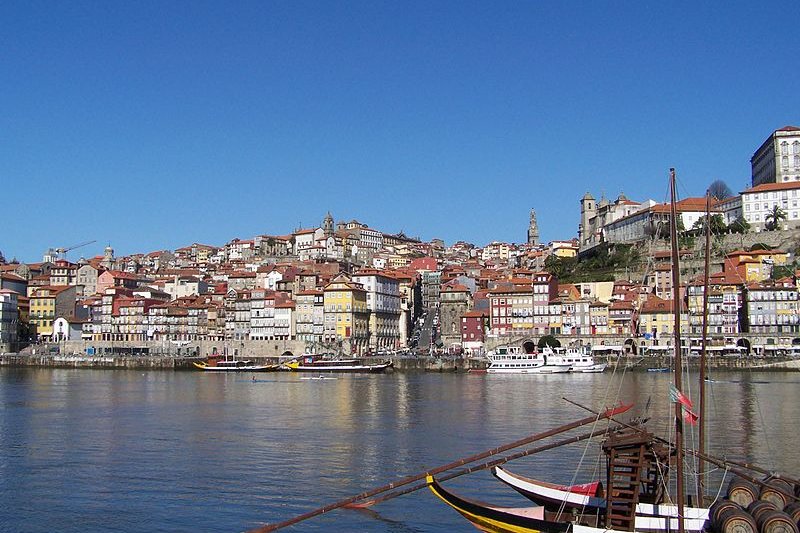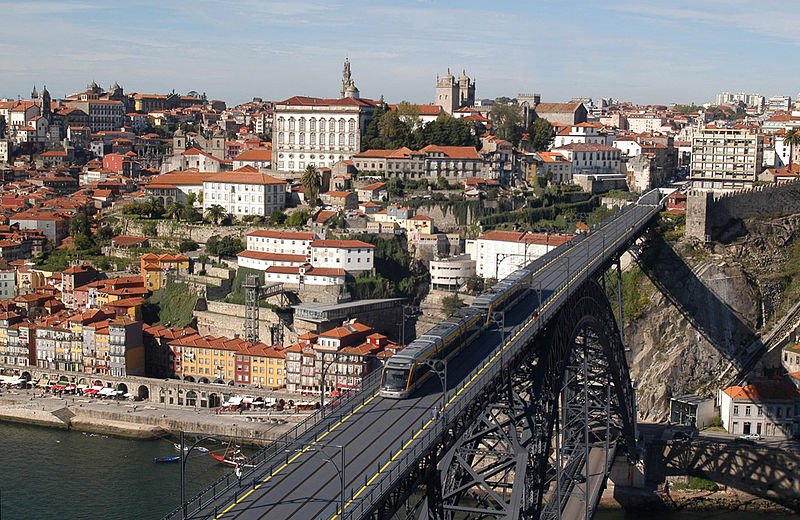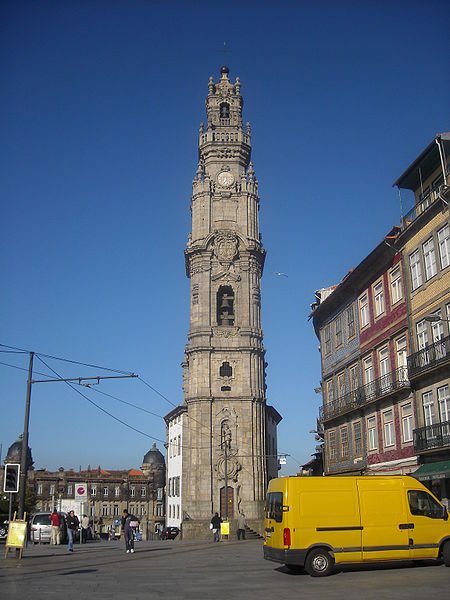
Porto, Portugal
Source: https://commons.wikimedia.org/wiki/File:Porto,_visto_de_Vila_Nova_de_Gaia.jpg
Author: Cornelius

Porto is the second largest city in Portugal, with a metropolitan area of 1.3 million people (2011 estimate). The city center, with a population of of 220,000, comprises 15 civil parishes. The city is within Porto District.

Dom Luis I Bridge, Porto, crossed by the Porto Metro
Source: https://commons.wikimedia.org/wiki/File:Metro,_Ponte_e_Porto.jpg
Author: JFVP

The city of Porto is located at the estuary of the Duoro River in northern Portugal. Its historical center, which is a World Heritage Site, is one of the oldest settlements in Europe. Its Latin name, Portus Cale, is the source of the name of the country, Portugal. The Portuguese name for the city is written with a definite article, as "o Porto", meaning "the port", and hence it is often referred in English as Oporto.
The earliest settlement in Porto is believed to be that of the Celts, whose ruins have been discovered, dating to 275 BC. A proper settlement was established by the Romans. In AD 711 it fell under the control of the Moors. It was reconquered by the Portuguese in 868 under King Alfonso III.

Foz do Duoro, Porto
Source: https://commons.wikimedia.org/wiki/File:Pergola_Foz_%28Porto%29.jpg
Author: jpvargas

In the 14th and 15th centuries, the shipyards of Porto were instrumental in launching Portugal into the Age of Discovery. In 1809 the city was invaded by troops of Napoleon Bonaparte, an event in history remembered for the collapse of the pontoon bridge over the Douro by the weight of the fleeing populace. In 1891, unrest in Porto let to a revolt that created the Portuguese Republic in 1910.
Today Porto is a major port for Portugal. It is also internationally famous for the manufacture and explore of fortified wine, called port wine, which was named after the city.

Torre dos Clérigos, Porto
Source: https://commons.wikimedia.org/wiki/File:Torre_dos_Cl%C3%A9rigos_by_B%C3%A9ria.jpg
Author: Beria Lima

Going to Porto
By PlaneThe Porto Sá Carneiro Airport (OPO) is the main airport in northern Portugal and the third busiest in the country. From the airport, you can catch the AeroBus to downtown Porto at Praça da Liberdade, for €4.00. The airport is served by Ryanair with flights to several major cities in Europe.
By Train
There are regular trains from Lisbon, Madrid and even Paris.
Sights in Porto
- Casa do Infante
- Casa-Museu Guerra Junqueiro
- Church of Cedofeita
- Episcopal Palace of Porto
- Igreja da Misericórdia
- Igreja de São Francisco
- Igreja do Carmo
- Igreja dos Clérigos
- Igreja dos Congregados
- Igreja Românica de Cedofeita
- Jardim do Palácio de Cristal
- Museu dos Transportes e Comunicações
- Museu Romântico
- Museu Soares dos Reis
- Old City Walls
- Palácio da Bolsa
- Porto Cathedral
Districts of Central Porto
- Baixa
- Boavista
- Cathedral District
- Central
- Cordoaria
- Ribeira
Civil Parishes of Porto
- Aldoar
- Bonfim
- Campanhã
- Cedofeita
- Foz do Douro
- Lordelo do Ouro
- Massarelos
- Miragaia
- Nevogilde
- Paranhos
- Ramalde
- São Nicolau
- Santo Ildefonso
- Sé
- Vitória
 Latest updates on Penang Travel Tips
Latest updates on Penang Travel Tips

Copyright © 2003-2025 Timothy Tye. All Rights Reserved.

 Go Back
Go Back